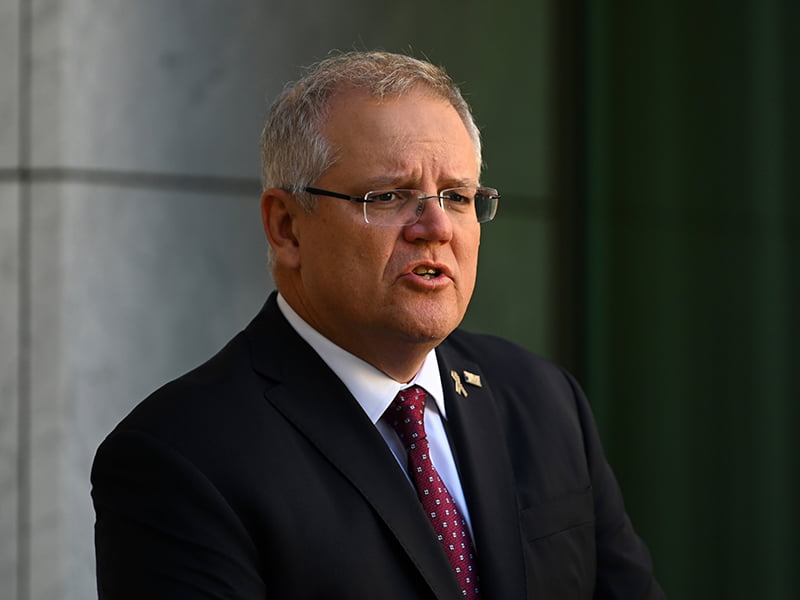The Morrison government’s second pandemic budget contained plenty of red meat for the tech industry through its $1.2 billion digital economy strategy initiatives. But despite this focus, the Digital Transformation Agency will see its budget and staffing levels substantially reduced.
Total resourcing for the Digital Transformation Agency (DTA) will reduce by about $90 million next financial year, from $425.5 million to $336 million. The average staff numbers will drop from 255 this financial year to 227 staff in 2021-22.
The reduced resourcing for the DTA came even as Mr Frydenberg made digital services and digital industry development themes a central component of his budget narrative, more so than perhaps any previous treasurer.
It also comes just weeks after the DTA was moved from Services Australia to the Department of Prime Minister & Cabinet.

The budget’s digital economy strategy included a grab-bag of government service delivery funding initiatives, new money for projects aimed at extracting value from government data assets, as well as significant new investment in digital skills programs, cyber initiatives, and digital infrastructure.
“Digital infrastructure and digital skills will be critical for the competitiveness of our economy, creating massive opportunities for growth and jobs,” Mr Frydenberg told the Parliament in his Budget address.
The Budget allocated more than $200 million over two years from 2021-22 to the redevelopment of the myGov platform, a project that has been known as GovDXP and is designed to provide a more personalised services tailored to individual citizens. The funding includes a $54 million allocation of capital funding.
The GovDXP project has so far been built out to phase one beta product through a series of outsourced supplier contracts to consulting giant Deloitte at a cost of more than $30 million.
Some $421.6 million over two years from 2021-22 – including $38.7 million in capital funding – has been allocated to the ongoing development work on the My Health Record and for funding for the Australian Digital Heath Agency.
These two major funding allocations follow $250 million in new funding given for the whole of government Digital ID program in the budget last October.
The DTA has been given an additional $10 million to “support the delivery of the government’s digital transformation priorities” while an additional $3.2 million extends the Digital Technology Taskforce’s funding until the end of June next year to support the implementation of the digital economy strategy.
The budget papers also reaffirm the government’s commitment to building a standardised back-end technology platform across government. The cost of the huge project is not known, classified in the budget documentation as “not for publication” – or nfp – due to commercial sensitivities.
“The government will provide funding over two years from 2021-22 to Services Australia to build and delivery modernised government technology for managing accounts, resources and workforce (GovERP), and the Department of Finance by the Service Delivery Officer and its 14 client organisations as the first implementation,” the Budget papers said.
“The government has committed to continuing to transform the operation of the Australian Public Service by consolidating and standardising the delivery of corporate services through the GovERP technologies.
“GovERP will provide a common digital backbone that allows the APS to rapidly collaborate, share and analyse data.
“Funding will also be provided in 2021-22 to develop the second pass business cases for the further adoption of GovERP including suitable standardised technologies for small and medium-sized agencies.
“The funding for this measure is not for publication (nfp) due to commercial sensitivities.”
Extracting value from data across the economy is a major theme of the government’s digital economy strategy.
It includes $111.3 million over two years from 2021-22 – including $35 million in capital funding – to continue the roll-out of the Consumer Data Right in the banking sector and to accelerate its roll-out into other parts of the economy, including the energy and telecommunications sector.
The budget allocates $40.2 million over four years from July to improve the government’s location-based data infrastructure through the creation of a three-dimensional “Data Atlas” of Australia’s geography to support business investment, environmental management and national disaster responses.
It has set aside $16.5 million to identify government data assets and to create a searchable data catalogue. The Australian government also plans to work with state and territory governments – in consultation with the private sector – to develop an Australian Data Strategy 2021-25 to be funded out of the Department of Prime Minister and Cabinet.
Among the initiatives unveiled as pre-budget drops to media and affirmed in the budget papers was the $53 million over four years to create a National AI Centre, and four AI and Digital Capability hubs to support SME to adopt artificial intelligence technologies.
Government has also allocated $33.7 million over four years to provide grants to businesses to work with government to develop AI solutions “to solve national challenges”, while $24.7 million over six years will fund a Next Generation AI Graduates Program to attract AI specialists through national scholarships.
Do you know more? Contact James Riley via Email.


What ?? No blockchain ? There has to be a blockchain. Digital skills are fine, but if there’s no blockchain? Can’t this government see that the future of the country is blockchain ? We need a blockchain and we need it now. People should be in the streets. You should be in the streets, shouting Blockchain. The government said blockchain had a huge future.They paid big US consultancies to investigate blockchain for all of us. Now there’s no blockchain ? Gutted …